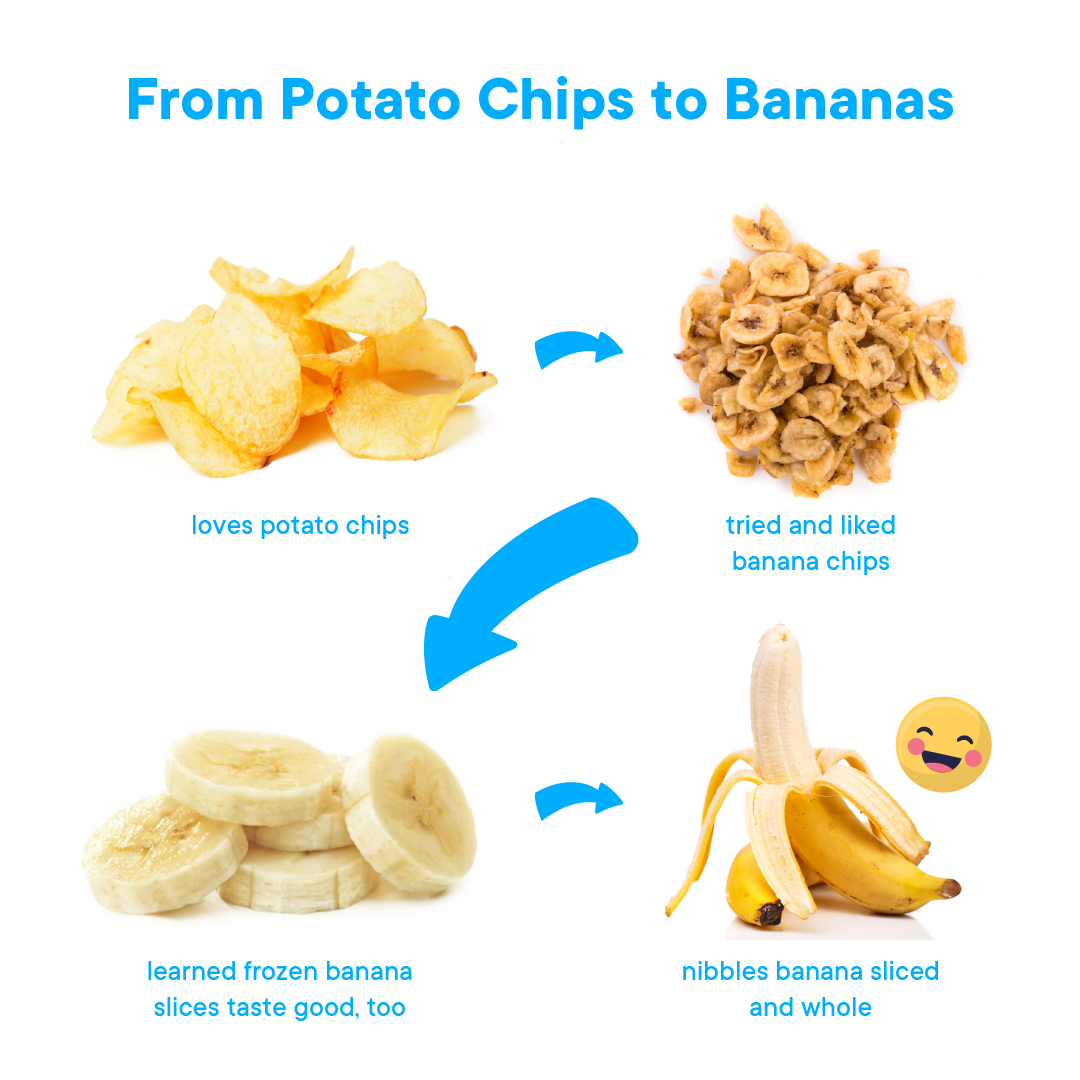A comprehensive guide on how to tackle food aversions and food sensitivity amongst children with autism.
View Table of Contents
- What is Sensory Sensitivity?
- What is Food Aversion?
- What is the Relation Between Sensory Processing Disorder and Food?
- What causes Food Aversion? Is It Oral-Motor or Oral-Sensory Related?
- Is Food Aversion a Sign of Autism?
- Food Sensory Issues in Babies
- What are the Red Flags of Sensory Issues with Your Child?
- Medical Assessments for Feeding and Eating Skills
- Occupational Therapy for Food Sensory Issues
- How Do I Get My Autistic Child to Eat?
- Picky Eating vs. Sensory Food Sensitivities
- Strategies for Dealing with Sensory Issues with Food
- How to Overcome Food Texture Aversion
- Sensory Friendly Foods for Autistic Children
- Sensory Foods List
- Sensory Processing Disorder Food Diet
- Food Sensory Issues in Autistic Adults
- Eating Healthy with Food Sensory Issues
- Advice for Food Sensory Issues
What is Sensory Sensitivity?
Sensory sensitivity can often be found alongside with autism. Sensory issues that can be found with autism usually include hyper-sensitivity and hypo-sensitivity to a range of stimuli.
These are also called over-responsiveness and under-responsiveness.
The range of stimuli include the following:
- Sounds
- Sights
- Smells
- Tastes
- Touch
Some people with autism can be hyper-sensitive to bright lights, while others actively seek out sensory input by jumping up and down.
Certain textures or smells can be uncomfortable for the individual with autism.
Read more: Sensory Processing Disorder
What is Food Aversion?
You may feel like your child with autism is a “picky eater”.
This can be the result of the narrow food selections as well as ritualistic eating behaviors adopted by children with autism, who are five times more likely to experience such behaviors.
Food aversion, or sensory food aversion, is the sensory overreaction by individuals to certain types of food.
The taste, temperature, color, smell, or texture of the food can trigger sensory issues in these individuals.
Children with autism can be food selective, causing major problems in their feeding.
Food texture and consistency are the top stated underlying factors in a child’s consumption or rejection of food.
What is the Relation Between Sensory Processing Disorder and Food?
Sensory processing issues are common in individuals with autism. Due to the disorder, autistic individuals are impacted negatively in terms of their daily routines.
One of the major parts of a daily routine for an individual is naturally eating.
Eating is known to be frequently impaired in children with autism. Studies showed significant correlation between sensory processing disorders and eating problems for these children.
Since hyper- or hypo-sensitivity to stimuli such as textures, smells, temperatures or colors greatly impacts the decision of a child to eat or not, food aversion can occur.
Children with autism are really selective and strict with what they eat.
This “picky eating” behavior creates major problems in the child’s diet.
A child with autism, who has sensory issues, does not process the sensory input in the same manner as a typically developing child.
Studies conducted with children with ASD showed that there is a strong correlation between eating problems and sensory issues.
What causes Food Aversion? Is It Oral-Motor or Oral-Sensory Related?
There is still no known reason for food aversion. Researchers are still trying to fully understand the stem reason for the behavior.
There are also studies focusing on addressing the anxiety and sensory issues thought to cause the food choices.
Oral-motor aspect of eating is related to the function of mouth muscles.
This includes the strength of the muscle, the range of motion, coordination, as well as its ability to move to manipulate the food.
Oral-sensory aspect, on the other hand, relates to how the mouth tissues actually perceive sensory information.
Such information includes texture, taste and temperature of food. Children with autism can have issues with either one or both of these aspects.
In order to eat food properly, children should possess certain skills to handle it.
When they lack such skills like oral-motor skills, they may refuse to eat, gag, spit out the food or vomit. They may prefer food that easily melt when chewed.
This may be caused by hypersensitivity as well.
Children with autism can also be hypo-sensitive. They may not feel that they have food in their mouth, and drop it without realizing.
It can be difficult to figure out what causes food aversion for your child with autism, as the reason is generally complex.
Caregivers and parents can consult their child’s pediatrician about the symptoms.
Speech-Language Pathologists are also expert in oral-motor skills and can inform you whether the child is having issues with skills.
Is Food Aversion a Sign of Autism?
Individuals with autism have sensory issues, food aversion being one of them. You may notice that your child with autism is a picky eater and eats only a limited selection of food.
The sensory issues that come along with autism spectrum disorders can cause food aversion.
This can mean that your child is hyper- or hypo-sensitive to certain texture, temperature or smell of foods. In return, food aversion can occur.
It is found that children with autism are five times more likely to have challenges relating to food. They have extremely narrow food selections and meal-related tantrums.
If you suspect that your child has a sensory food aversion, you may want to consult your pediatrician about it.
Read More: Autism Spectrum Disorder - The Definitive Guide
Food Sensory Issues in Babies
Food sensory issues cause challenges in babies, too. The symptoms are similar to a child who seems like a picky eater.
However, sensory issues cause physical impact for the baby. It is not just a matter of preference. They feel sensory overload due to the properties of a food.
Food sensory issues can cause a baby to:
- Refuse trying new foods
- Eat only a few favorite foods
- Avoid certain foods due to texture, temperature, color, smell
- Be fussy during feeding time
What are the Red Flags of Sensory Issues with Your Child?
There are a couple of signs and “ red flags ” that could indicate that your child may have sensory issues. Here are some of them:
- Eating problems
- Gagging at the sight, touch, smell, taste of foods
- Sleeping problems
- Eating only certain types of textures
- Difficulty with self-care
- Excessively putting things in mouth or chewing toys after the age of 18 months
- Floppy or stiff body
- Oversensitivity to touch
- Being scared of loud noises
- Being on the move all the time
- Difficulty making friends
- Disliking crowded rooms
- Being uncomfortable in bright rooms
- Picky eating
- Being unaware of pain
Medical Assessments for Feeding and Eating Skills
The specific cause of food aversion and eating problems have not been determined and there are still studies conducted on the topic.
But it is a fact that children with autism have issues with feeding and eating skills.
It is known that certain medical, behavioral, and environmental factors such as sensory issues should be considered when you notice feeding problems.
Before the problem is addressed, the root cause of the feeding issue should be examined.
Medical conditions can impact eating habits. In return, eating habits impact health.
If there are medical problems affecting eating habits, they should be determined and managed appropriately.
Addressing behavioral problems comes after making sure that there is nothing wrong medically or the medical issues are addressed properly.
A dental exam should be done for cavities, infection, or other problems. These could be causing pain to the child and making it harder for them to eat.
Since sensory sensitivities can make oral care difficult for children with autism, going to an experienced pediatric dentist familiar with working with autistic children can help.
Oral-motor function including swallowing studies, assessment of food sensitivities and allergies, making a profile of the child’s diet and nutritional issues can be done for medical assessments in terms of feeding and eating skills.
During this process, the child’s eating history is taking. This will be done to learn about if the child is losing oxygen while eating, or if there is reoccurring respiratory problems.
These information will also determine if the child is choking or gagging while eating.
Feeding assessment is done by a team of occupational therapists, speech-language pathologists, nutritionist or dietician along with a doctor and nurse.
Moreover, gastrointestinal functioning and symptoms of individuals with autism can also cause concern.
Autistic individuals can have inflammatory bowel diseases, abdominal pain, or chronic constipation.
Sometimes treatment of these issues can alleviate various problems and improves the quality of life.
Certain types of diets also seem to help people with autism spectrum disorders. These include a gluten-free, casein-free diet. Parents and caregivers can find links between behavior and the diet of their child.
It is important to first look into medical issues when you notice that your child is having problems with eating.
Not all problems are caused by behaviors. Consult your child’s doctor to conduct a comprehensive testing to eliminate any medical issues that may be the root cause of feeding problems.
Occupational Therapy for Food Sensory Issues
There are some ways to help your child improve their processing of sensory information. However, not all can be done at home by yourself.
A therapist trained in this area can use specialized techniques appropriate to your child’s needs.
One of the options is occupational therapy . Occupational therapists specialized in feeding and sensory processing can assess what the underlying concerns are and intervene in sensory ones.
Occupational therapists will analyze your child’s diet in a detailed manner. They will determine appropriate foods.
Through the professional practices, your child will be able to warm-up their system with sensory-based activities.
If your child is showing oral defensiveness, they will also provide oral motor massage to alert your child’s mouth to get it ready for feeding.
Through occupational therapy, your child will be presented with opportunities to develop positive oral experiences instead of negative ones.
They will be making use of toys and feeding utensils with different shapes and textures.
Come along with 200k+ families!
Let's communicate better!
Download for Free.
How Do I Get My Autistic Child to Eat?
Mealtime issues are a common problem among parents, and children with autism are more likely to be highly selective and not eat.
However, there are things that you can try to help your child with their feeding.
Make sure there are no physical problems causing food aversion. Children with autism can have certain medical problems that could make eating uncomfortable for them.
These could be GI problems, dental cavities, or acid reflux. It is important that your child is screened by their doctors and such problems are addressed.
Take baby steps with positive reinforcement. Start small. Many children with autism are inclined to be resistant to new foods. You can take small steps to introduce new food. This could be simply putting the new food on the child’s plate for only a few moments.
Reward your child once they successfully complete this baby step. Positive reinforcement can work wonders. Verbal praise is the most common type. Or you can use the token system , where the child can earn tangible rewards like their favorite toy or play time on the phone. Be specific when praising.
Try food chaining to expand the diet. Food chaining is a method used to introduce new foods into the diet of the child while also building on past successful feeding experiences.
In this method, the chain begins with an accepted food that the child eats reliably and willingly. The end of the chain is the goal food.
Although it is a slow process, food chaining is very effective. You can start with similarly flavored foods to introduce a new one.
For others, texture might be the most important problem so you can introduce similarly textured foods.

The chains can be short, long, simple, or complicated. It depends on your child’s reaction. You can, for instance, start with a chicken nugget, your child’s favorite.
Then work your way up to different brands of chicken nuggets. The shapes or the tastes might be different along the way. Then you could eventually introduce chicken.
Establish structure and basic policies around eating. Children with autism respond well to structures and routines.
They like to know what they will expect. You can try some basic strategies to boost your effort while expanding your child’s food selection.
- Section out meals and snacks in a day
- Limit the beverages between meals including milk and juice
- Try to expose your child to non-preferred food every day
- Limit the time spent during meals, like 30 minutes
- Do not force or bribe eating
- Try to explore foods outside meal times, include food shopping, cooking or gardening into your daily routine
Picky Eating vs. Sensory Food Sensitivities
As we discussed before, feeding issues can be a challenge for every parent or caregiver. Children could favor one type of food over others and don’t like a variety of foods.
Picky eaters are like that. They may not like eating a variety of foods.
It is similar to those who have sensory food sensitivities who don’t like eating certain types of foods. However, there is a difference between these rejection in their diet.
For children with sensory food sensitivities, such sensitivities can cause food aversion where the child avoids food. They may be over-sensitive or under-sensitive to foods due to the sensory issue.
Some textures, colors, temperatures or smells of foods can be uncomfortable for children with sensory sensitivities.
Fibery texture of a vegetable can feel like large chunks in the child’s mouth, while others may not even taste any flavor. For picky eaters, these do not cause sensory overload.
Strategies for Dealing with Sensory Issues with Food
There are some strategies that you can try at home to deal with food sensory issues.
They should be tried for a stretch of time, for 4 to 6 weeks for instance. They help desentizing the sensory system of the child in many aspects.
Here are a couple of those strategies:
-
Don’t pressure your child. They are already having sensory overload. You don’t want to add to the anxiety.
-
Try to be understanding and discuss their feelings openly. Let them know you understand how difficult it is for them to approach or eat certain things and that it is okay.
-
Play sensory games during the day.
-
Encourage and reinforce positive behaviors. When they are trying to get accustomed to a food, make sure you do it in small steps and reinforce positive behavior along the way.
-
Incorporate food in daily routine. Cook with your child. Have them get their hands dirty. Let them feel and play with the food while cooking, for instance.
-
Take baby steps. Sensory system of your child may change as they get older. So go slowly. Implement a system or routine that they will know what comes next.
-
Let them play and have fun . Adjusting new textures or smells may take time. Put a bowl of berries for them to touch and smell. This is a great way to ease these foods into their diet.
How to Overcome Food Texture Aversion
Food texture aversion can really limit a diet. Research suggests that around 50% of children with autism avoid certain foods due to their textures.
There are, of course, ways to try to overcome food texture aversion.
However, the first thing to do is to make sure that your child does not have any oral-motor dysfunctions that may be causing the food texture aversion.
If you know that your child can safely consume all textures, you can try texture desensitization .
This is a way to prepare the body for the texture. Increasing familiarity will likely increase comfort with trying a new texture.
Try to help your child become desensitized to new textures by encouraging them to interact with the food.
Even before pushing them to eat the food, try to eliminate stress of the texture sensory overload by making sure that they are around that food and interact with it.
They can observe the food while you are preparing it and putting it on the table during the meal.
You can gradually increase the level of exposure, such as putting the plate with the food closer to your child during meal times.
When they are a little comfortable with that food around, you can have them touch it, for instance, to make it more familiar before actually eating it.
Have them touch, smell, play with it a little, and maybe try a tiny piece.
Make sure that you keep the bites small. To go about this process, have the same food every time. Don’t forget to use praise and positive reinforcement at every step along the way.
Food chaining is also another great way to overcome texture aversion as we have discussed in this post.
Just make sure the progress is in small baby steps so that your child is not overwhelmed by the sensory overload.
Sensory Friendly Foods for Autistic Children
Children with autism with sensory food issues may like different types of foods.
Some with under-responsiveness may like crunchy foods , while others with over-responsiveness lean towards smoother textures depending on the underlying sensory problem.
There are various foods that are considered sensory friendly by many parents and caregivers.
These may be a great starting point when introducing new foods into the diets of the children.
Sensory Foods List
Crunchy or crispy foods:
- Carrots
- Cucumbers
- Rice cakes
- Nuts and seeds
- Apples
- Peppers
- Grapes
- Pears
- Popcorn
- Snap peas
- Crackers
- Banana chips
Squishy foods:
- Mangos
- Peanut butter
- Almond butter
- Avocadoes
- Cheese
- Mashed potatoes
Runny foods:
- Yogurt
- Smoothies
- Soup
Soft foods:
- Roasted vegetables
- Cereals with milk
- Scrambled eggs
- Fish
Sensory Processing Disorder Food Diet
Sensory processing issues can cause an individual’s diet to be really limited. The individual can experience food aversion due to hypo- or hyper-sensitivity to certain types of foods.
This creates challenges for the individual or their parents and caregivers.
Although it could be really convenient to have a set-in-stone diet specifically for those with sensory processing issues, unfortunately there is none.
Diet and nutrition have a great impact on individuals with sensory issues. However, diet is also really personal.
It changes from one person to another, just like the sensory issues. Although two people can have the same symptoms, their root cause might be different.
For instance, stomach ache can be caused by milk allergy, or it could be sensitivity to wheat.
Therefore it is really important to figure out what causes the triggers, and find out the root cause of it.
This means that no single diet will fit everyone. Individual assessment is essential.
Food Sensory Issues in Autistic Adults
Eating difficulties are known to be common in children with autism.
However, autistic adults also face challenges in this department, as research suggests, that these issues can persist into adulthood.
There is still a need for more research on the topic.
Participants of a study conducted on the matter suggested that the impacts of autism on their eating habits continued into adulthood. They still had difficulties with sensory sensitivity.
A study found that limited food selection in autism was less pronounced in older children compared to younger ones.
This suggests that the impacts can decrease over time. However, some of these eating behaviors still continued into adulthood.
Eating Healthy with Food Sensory Issues
There are various diets to try for food sensory issues. We have also discussed some strategies to help introduce different types of foods into the diet of the individual.
Sometimes autistic children with sensory food issues pick a food and just stick with it. Their favorite food may even be chicken nuggets.
However, processed foods are not always the best way to get nutrition.
Food chaining is a great strategy to utilize and introduce healthier options into the child’s diet.
Healthy options like vegetables and fruits can be added to their meals by slowly replacing less healthy options like packaged and processed foods.
Children with autism who have food sensory issues can also associate the packaging of that processed food with the foods.
For instance, when they see a red packaging similar to the one that comes with something they don’t really like, they may refuse to eat foods with red packaging.
It may be wise to remove packaging once you get the food at home to make sure they don’t associate it with the food or brand.
Also, it is always beneficial to eliminate artificial foods from your child’s diet, like artificial dyes.
They add nothing beneficial while affecting the brain in a negative manner.
Reading the ingredient lists and educating yourself with healthy food can be helpful to achieve a healthy habit of eating with food sensory issues.
In addition to basic adjustments with the ingredients, there are also ways to enjoy and eat foods that could be generally rejected by the child with autism who face food sensory issues.
If you feel like your child can’t eat certain fruits due to their texture, for instance, you can try to prepare them in a different way, like making a smoothie.
Advice for Food Sensory Issues
Eating is one of the most important aspect of life that helps us sustain our lives.
Food sensory issues can really negatively impact daily life, and there are many people out there that suffer from such issues every day.
Parents and caregivers who have an autistic child with food sensory issues try strategies suggested by professionals.
Food chaining, desensitization of the child with certain textures or smells, for instance, are some of the strategies that can be tried to introduce new food groups into the child’s diet.
People with autism who are suffering from food sensory issues in their adulthood state that food sensory issues caused them to have bad health.
They are still trying to figure out what works for them or not.
Some managed to make it work by trying a few tricks. Autistic adults keep trying new things in new ways .
For instance, if they don’t like the texture of apples and they want to eat more fruits, they turn it into smoothies. Texture is more tolerable and they get the nutrients they want in their diets.
Last Updated: 23 December 2022





